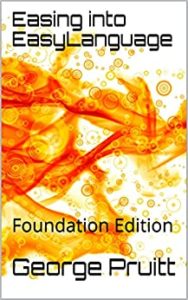 I graduated from UNC Asheville with a B.S. degree in Computer Science many years ago. I was fortunate to study under some real brains – Dr. Joe Daugherty, Dr. Mark Boyd and Dr. Wayne Lang. A truly great university that is comparable to any in the nation.
I graduated from UNC Asheville with a B.S. degree in Computer Science many years ago. I was fortunate to study under some real brains – Dr. Joe Daugherty, Dr. Mark Boyd and Dr. Wayne Lang. A truly great university that is comparable to any in the nation.
UNC Asheville’s Undergraduate Research Program has been recognized in U.S. News and World Report’s national rankings as a “program of distinction.”
I joined Futures Truth as a senior in college in 1989 as a C programmer and incorporated a sophisticated and large programming project into my senior project [Excalibur]. I worked there for 31 years and have authored many articles in magazines and trade journals. I have written and co-written several books that can be purchased at Amazon.com: The Ultimate Trading Guide, Building Winning Trading Systems with TradeStation – (first and second editions), The Ultimate Algorithmic Trading System Toolbox.
I am now the owner of TrendFollowingSystems.com. This is where I like to dedicate a portion of my time searching for good trend following algorithms and continuing to develop my Python based back tester.
My latest books TrendFollowing Systems: A DIY Project – Batteries Included, Easing Into EasyLanguage Trilogy [Foundation, Hi-Res and Advanced Topics have been very popular. If you want to learn EasyLanguage I would recommend checking out the trilogy.
I really enjoyed my writing my last Wiley book – The Ultimate Algorithmic Trading System Toolbox, because I got to create a very simple, but powerful, back testing engine in my now favorite programming language, PYTHON [ My Trend Following books have extended this simple Python script to a full blown back testing platform that is name TradingSimula-18]. This book was released almost two years ago and I am dedicating a good portion of this website to its support. This book, unlike my others, is chocked full of source code that can be incorporated into TradeStation, Amibroker, MultiCharts and the Python and Excel based platforms presented in the book. I want to build upon this code and create new and different ways to expand the software and technical analysis. This will undoubtedly be a ongoing adventure for both myself and my readership.
This photo is used so Google gets the right picture in the Authors Pane when you search for me.







Mr. Pruitt,
Good afternoon. My name is Elijah H. Walker and I am new to trading. The software engineering component is fascinating to me. When I was 10, I began to learn BASIC in a summer public school program. I wrote SO MANY programs. However, my Catholic school was not tech savvy at all. I ended up not doing anything with my new found interest. Plus my father said that he was not interested. I am now a funeral home owner that wants to recapture the past and go to school for computer programming. I would like to use my Finance degree and knowledge of the markets to learn to support programs like Tradestation. Please advise.
Elijah Walker
Elijah,
You really don’t need a computer science degree to utilize TradeStation. I would simply suggest downloading a simple course on one of the BASIC variants and review the concepts on if-then, loops and arrays. Let me look around and see if I can find a link for you. Sorry for the delay in getting back to you.
My Best,
George
Hi George! What\’s the advantage of using python to back test, over using something like tradestation\’s platform? I attempted python many years ago, but found the data to be very expensive to purchase. Have things changed over the years?
Hi Again MJ,
I am currently working on another book that introduces a much more powerful Python backtesting engine. I think Python and the associated testing capabilities are right up there with TradeStation, but you are right. Purchasing quality historical data is not cheap. Intraday data is very expensive, but EOD data is not too bad. In my book, I will provide 20 years of historic commodity futures data that I have culled from QUANDL’s free data. I have cleaned it to the point that you can use it to help develop an algorithm, but further testing with premium data would be highly recommended prior to actual automation. CSI and Pinnacle Data are very reasonable. You can buy a very deep database from Pinnacle for $99 and then update if you like. Keep an eye open on this website for the release of my new book.
Thanks again,
George
Has the book been released or still not yet
Trend Following: A DIY project is available on http://www.amazon.com. Kindle and paperback versions.